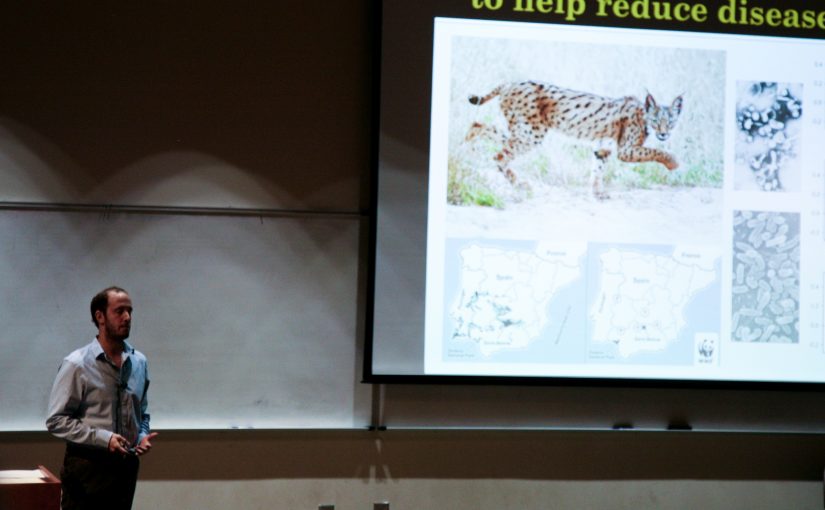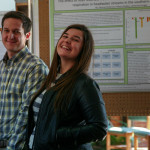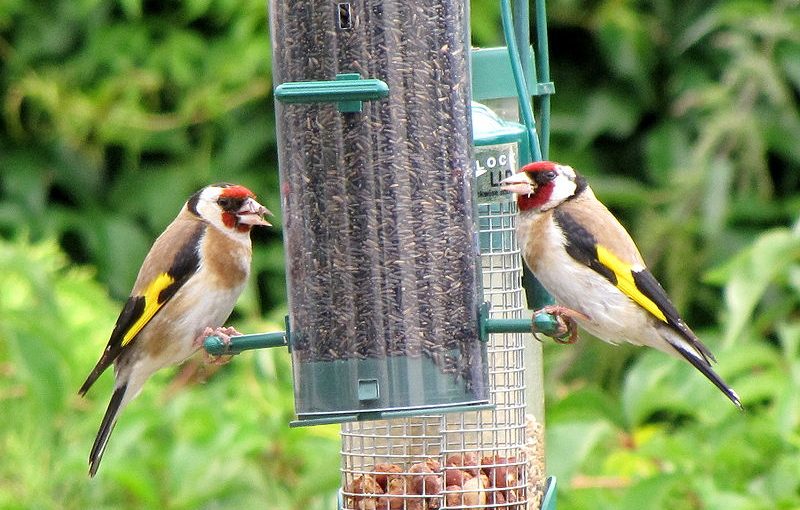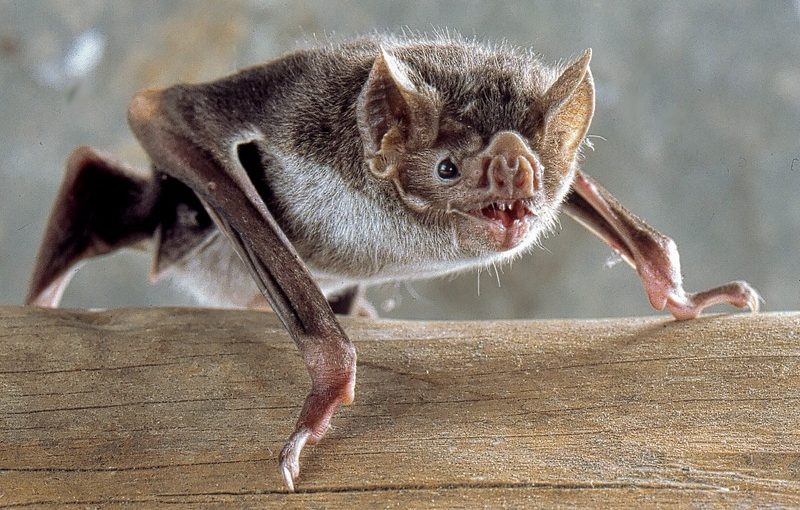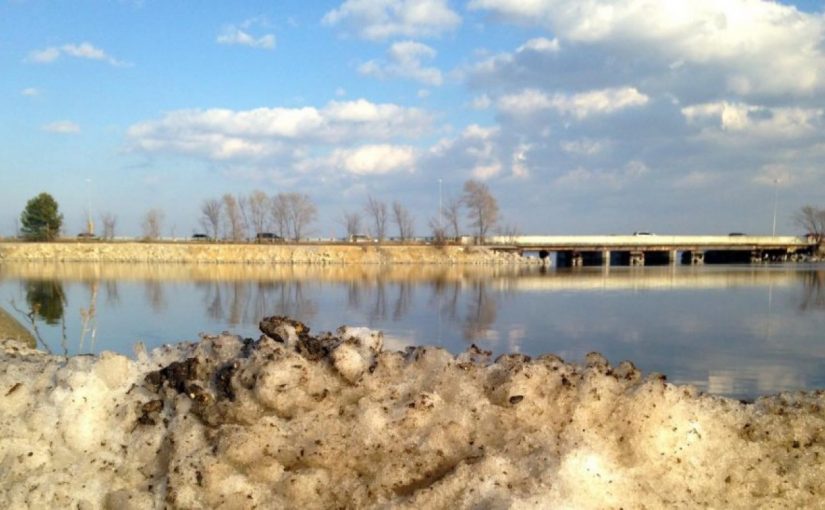GSS 2017 was on January 27 and 28. Here are a few photos of the talks, posters and activities from the weekend.
Month: April 2017
Heterogeneity in patch quality buffers metapopulations from pathogen impacts
Many wildlife species persist on a network of ephemerally occupied habitat patches connected by dispersal. Provisioning of food and other resources for conservation management or recreation is frequently used to improve local habitat quality and attract wildlife. Resource improvement can also facilitate local pathogen transmission, but the landscape-level consequences of provisioning for pathogen spread and habitat occupancy are poorly understood. Here, we develop a simple metapopulation model to investigate how heterogeneity in patch quality resulting from resource improvement influences long-term metapopulation occupancy in the presence of a virulent pathogen. We derive expressions for equilibrium host–pathogen outcomes in terms of provisioning effects on individual patches (through decreased patch extinction rates) and at the landscape level (the fraction of high-quality, provisioned patches), and highlight two cases of practical concern. First, if occupancy in the unprovisioned metapopulation is sufficiently low, a local maximum in occupancy occurs for mixtures of high- and low-quality patches, such that further increasing the number of high-quality patches both lowers occupancy and allows pathogen invasion. Second, if the pathogen persists in the unprovisioned metapopulation, further provisioning can result in all patches becoming infected and in a global minimum in occupancy. This work highlights the need for more empirical research on landscape-level impacts of local resource provisioning on pathogen dynamics.
Predictors and immunological correlates of sublethal mercury exposure in vampire bats
Mercury is a widespread and pervasive contaminant, and chronic exposure to mercury can impair host immune defense and susceptibility to infections. However, the relationship between mercury and immunity is unknown for bats, which appear immunologically distinct from other mammals and are reservoirs of many pathogens important to human and animal health. Our study quantified mercury in hair collected from blood-feeding vampire bats (Desmodus rotundus) in two populations from Belize. Bats that foraged more consistently on domestic animals exhibited higher mercury. However, relationships between diet and mercury were evident only in 2015 but not in 2014, which could reflect recent environmental perturbations associated with agriculture. Mercury concentrations were low relative to values observed in other bat species but still correlated with vampire bat immunity. Bats with higher mercury had more neutrophils, weaker bacterial killing ability, and impaired innate immunity. These patterns suggest that temporal variation in mercury exposure may impair bat innate immunity and increase susceptibility to pathogens such as bacteria. Unexpected associations between low-level mercury exposure and immune function underscore the need to better understand the environmental sources of mercury exposure in bats and the consequences for bat immunity and susceptibility
North America’s freshwater lakes are getting saltier
Road salts and brines can help keep roads passable during winter weather, but road salts are also affecting lake chloride concentrations through runoff. A new study completed as part of the GLEON Fellowship Program, and just published in PNAS, found that increasing lake salinity may be widespread, particularly in north temperate ecosystems, which are home to the highest densities of lakes on Earth. Led by Hilary Dugan, the team, including GSO member Kait Farrell, identified decadal trends in chloride concentrations from 371 North American lakes, and found that impervious surface cover, or the amount of paved surfaces in a watershed, is a strong predictor of chloride trends in lakes. Worryingly, as little as 1% impervious surface cover near a lake may increase the risk of long-term salinization, and the potential for steady and long-term salinization of many lakes in the US is high. Even in Georgia, where we apply less road salt than in the focal study area, it is important to track long-term chloride trends in lakes and reservoirs, as urbanization and agriculture can also contribute to increasing salinization, which can diminish the ecosystem services lakes and reservoirs provide.
Read the full article at https://doi.org/10.1073/pnas.1620211114
Running List of Ecology Postdoc Fellowships
Allison Barner, a postdoc in the Boettiger Lab, University of Berkeley has started a list of ecological and quantitative postdoc fellowships. Check it out.
